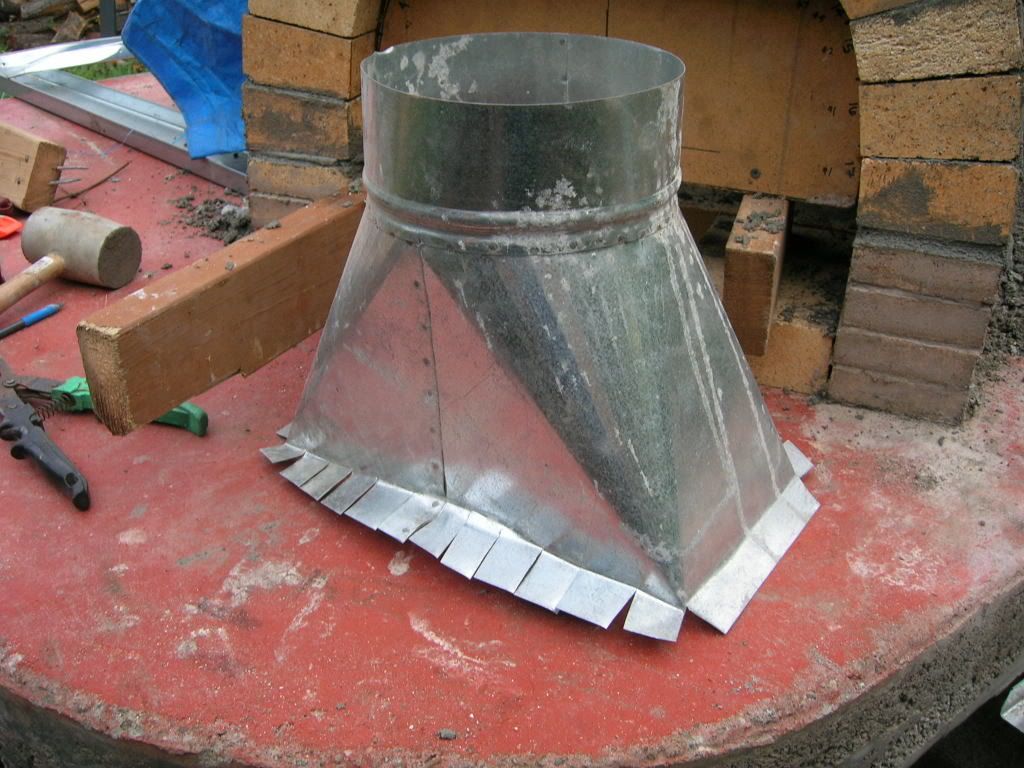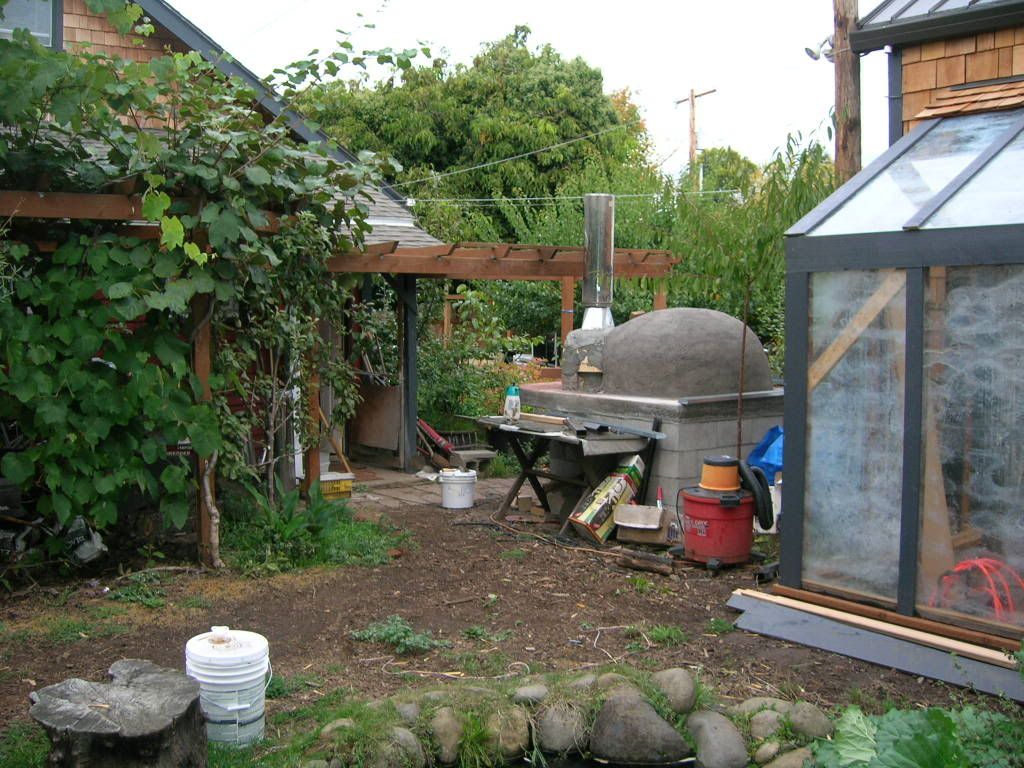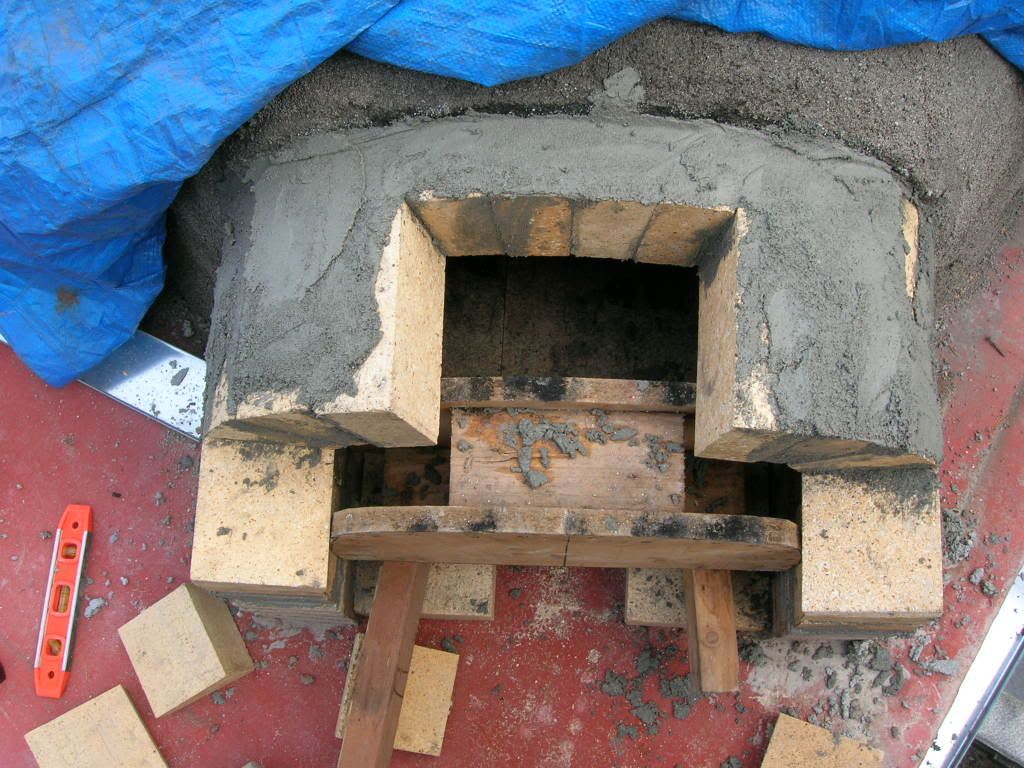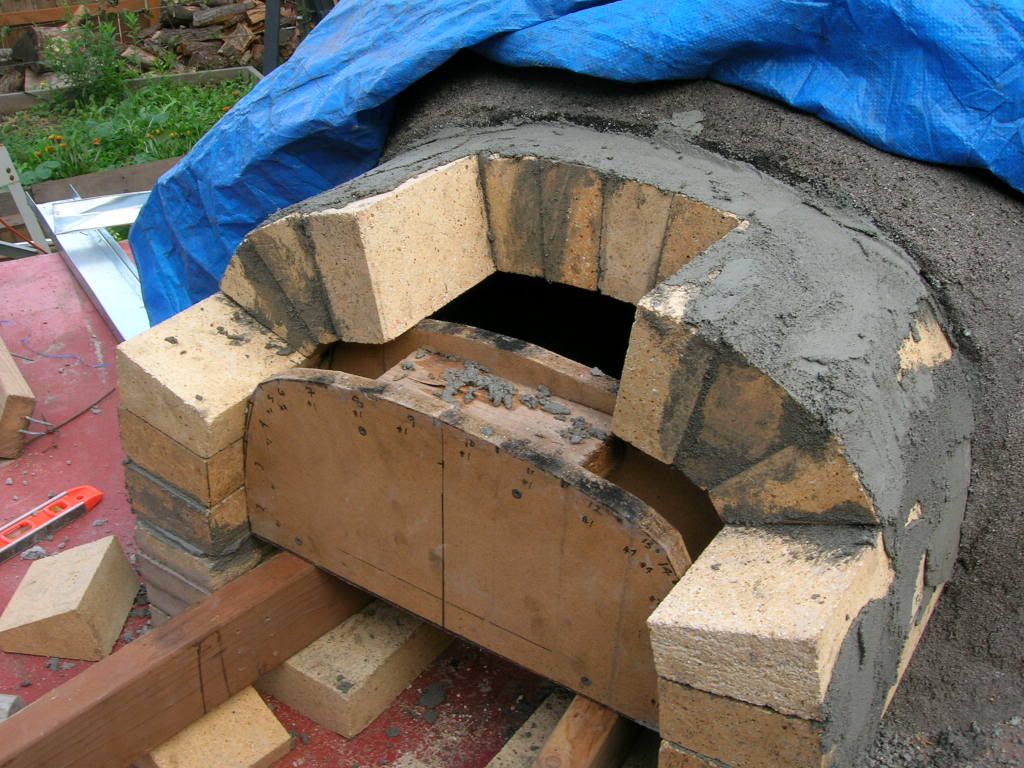#47
(M) Your super photos came just when I need them. Thanks!
(P) " (the metalbestos sections were $30 from there also)
(M) I guess that would be the shiny double walled piece that seems to be about 3' long-tall?. The word asbestos is alluded to and I have seen it before. Evidentally there must be no danger as such flues are still being sold at my Home Center.
(P) " i set on the arch, and used the weight of the chimney pipe to hold it down solidly, and mortared it in place."
(M) Smart, effective and neat! Also how you straddled-staggered the different size bricks. But what else would one expect from an Oregonian?

(P) "i really hope my vent opening is large enough! it's 8.5" x 4.5" inside the archway, tapering up to a larger cavity inside the galvanized vent piece."
(M) Paul, my concern is that one could make the flue too large and perhaps divert too much heat with the smoke. The opening you made looks just about right. Luis Arevalo's isn't much bigger and he says his oven draws fine. After all, we're not making a conduit for fluid. Gases will escape, .... particularly after eating pizza.
Ciao,
Marcel















Leave a comment: